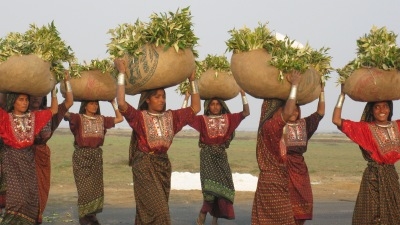Gujarat has the longest coastline in India, with a diversity of habitats, especially mangroves, salt marshes, coral reefs, wetlands, and sea grasses. The Gulf of Kachchh is home to coral reefs and India’s first marine national park.
Gujarat’s coasts are, however, facing an onslaught of rapid urban and industrial development. Around 70 percent of India’s crude oil is imported through two major ports and several smaller facilities in the Gulf of Kachchh. The region also has two of the world’s largest refineries, several booming towns and industrial centers, as well as India’s largest salt industry.
However, while large patches of mangrove forests remain along the Gulf of Kachchh, the region presents a range of pollution-related challenges stemming from rapid industrial and urban development, and the growth of fisheries. Moreover, the region’s arid climate leads to very little freshwater inflows which, coupled with coastal erosion, have reduced the mangroves’ natural process of regeneration.
Although it is difficult to assess the loss of coastal habitats due to the inadequacy of records, the region’s marine ecosystems have endured a lot of damage from destructive fishing practices that use chemicals and pesticides. The region’s flora and fauna are also at risk from potential oil spills from the large number of tankers that ply these waters. Gujarat’s coast is also prone to frequent cyclones, earthquakes, storms, and floods.
Project activities
Integrated Coastal Zone Management Project activities are being piloted in the coastal districts of Kachchh and Jamnagar. Select coral and mangroves species are being restored. Coral transplantation pilots have proved successful and are being scaled up. About 5,200 hectares of mangroves have been planted. Public awareness about environmental issues is being raised and turtle habitat mapping is ongoing.
The project is also establishing a national center for marine biodiversity in Dwarka to build baseline ecological information and carry out higher order research in marine and deep sea biodiversity. An economic valuation of coral species has been carried out for the first time, and a coral atlas for the state has been developed.
Efforts are under way to complete the sewage system for Jamnagar city to prevent further degradation of the coral reefs in the Gulf of Kachchh. As Gujarat enjoys a prime maritime location on India’s western coast with a large number of existing ports and many new ones on the anvil, a plan to prevent oil spills is being developed.

